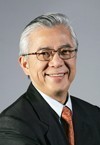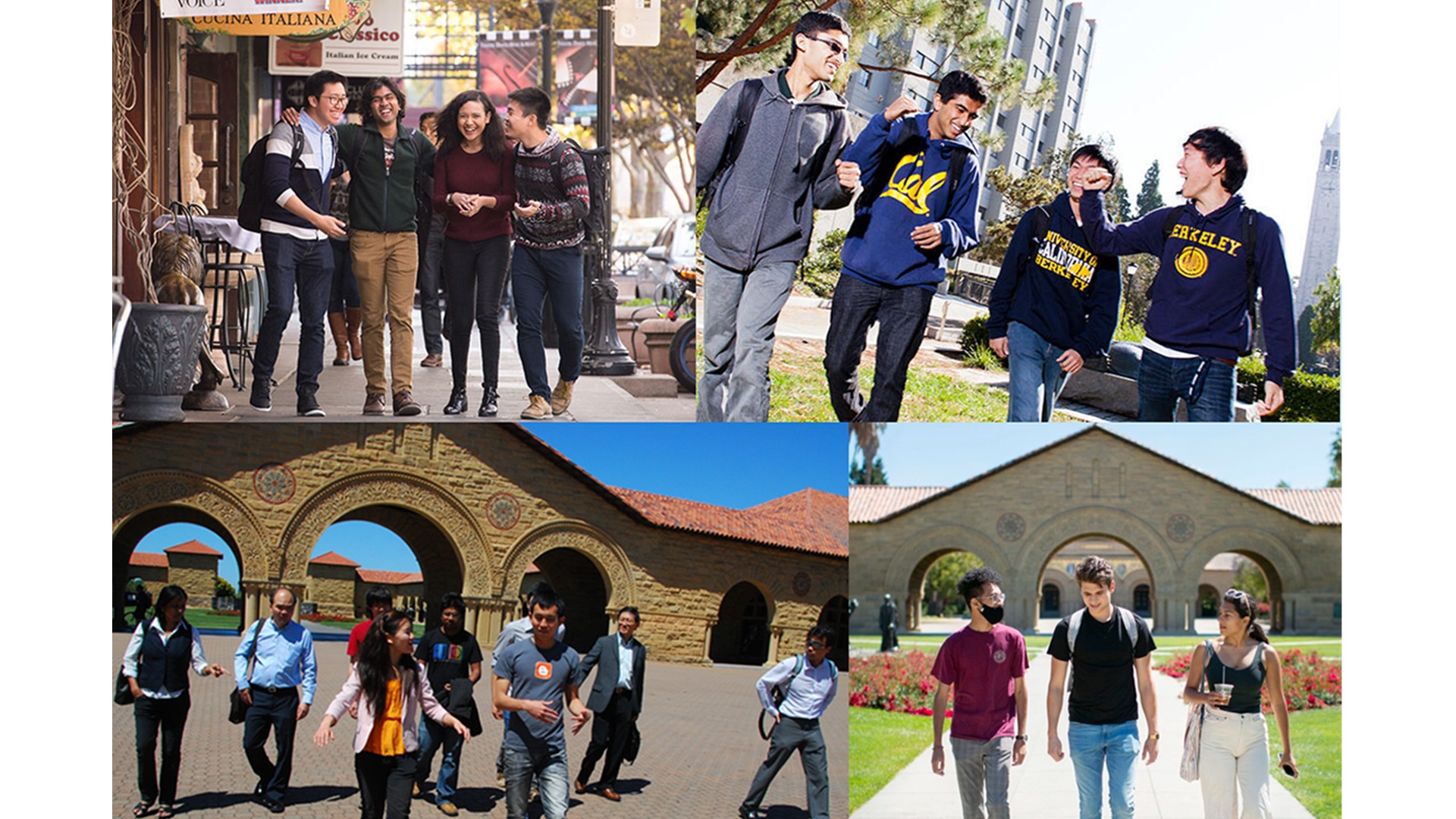Reflections on 20 years of NOC: Part 1 – Answering the call
A journey with kindred spirits and adventurous souls

The NUS Overseas Colleges (NOC) programme began in 2002 with 14 NUS students arriving in Silicon Valley. Today, it has more than 3,600 alumni, with over 15 entrepreneurial hubs established across the globe. Its founder, former NUS President Shih Choon Fong, looks back on how it all began in a three-part retrospective on its 20th anniversary.
It was on the morning of Sep 11, 2001 that I gazed at the shimmering waters of the Pacific Ocean from my room in Vancouver’s Pan Pacific Hotel. In a matter of hours, we were to board a flight to Boston Logan International Airport. All of a sudden, as the TV flashed a quick succession of horrific scenes, my gaze was transfixed by the crumbling towers of the World Trade Center in New York City. Terrorists had hijacked two planes that had departed from Logan Airport and crashed them into the twin towers.
Why was I in Vancouver on 9/11?
The journey that brought me to Vancouver actually started in 1997, when I became part of the change taking place in Singapore, a change that was further intensified by the crashing of the twin towers. Having returned to Singapore that year after 30 years in the West, I had been an advocate of building and strengthening partnerships with the leading universities in some of the most dynamic regions in the East and West.
In early September 2001, an NUS delegation and I embarked on one of many visits that took us across the Pacific and Atlantic. This was a 12-day working trip to Shanghai, San Francisco, Vancouver, Boston and back to Singapore.
Our itinerary included, among other things, meetings with academic colleagues and leaders of Fudan University; Stanford University; the University of California, Berkeley; the IBM Almaden Research Center; the University of British Columbia; the Massachusetts Institute of Technology (MIT) and Harvard University. Alas, we did not make it to either MIT or Harvard. Instead, we were marooned in Vancouver for days desperately trying to re-book flights across the Pacific to Singapore.
For context, let me dial back the clock.
Change was in the air
In January 1997, I returned to Singapore, my native home, after having spent 30 years in North America, 10 in the private sector and 20 in academia. It was a change of direction in life – from Professor at Brown University in the US to Founding Director of the Institute of Materials Research and Engineering in Singapore. Soon afterward, I received a concurrent appointment as NUS Deputy Vice Chancellor.
Singapore had spent the earlier part of that decade transforming where everything seemed new and fresh. The mood of optimism and sense of expanding possibilities was palpable. Things were happening and I wanted to be part of it.
Then, in July 1997, the Asian financial crisis struck, inflicting havoc on regional economies. Almost simultaneously, a haze blanketed large swathes of Southeast Asia. The mood changed. Economic restructuring – building a ‘Knowledge-based Economy’ synonymously known as the ‘New Economy’ – was in the air.
While in the US between the mid-60s and the mid-90s, I had observed, from the vantage positions of being in academia and a major corporate research and development lab, two American phenomena occurring in parallel – Silicon Valley’s economic dynamism versus Detroit’s economic inertia.
Detroit, the industrial powerhouse of America, transformed America in the first half of the 20th century. Its automobile industry created the sprawling cities of America and transformed how Americans lived, worked and played. A seemingly unstoppable force with huge profits, Detroit and its Big Three automakers became mired in inertia and complacency. By the 1970s, Detroit was a shadow of its former self. It had not changed with the times.
The story couldn’t be more different for Silicon Valley. The Valley was a story of an underdeveloped region in the 60s that became the innovation hub and start-up capital of America by the 90s. It was the intersection of optimism, enthusiasm for ‘the new thing’, of big ideas and like-minded people from all over the world – dreamers, doers, entrepreneurs and venture capitalists. These and the opening of new vistas of opportunities and possibilities impressed me deeply. It did not escape my notice that Silicon Valley had Stanford, a major research university and many of its graduates became innovators and entrepreneurs.
I started to wonder to myself: How would a Singaporean institution – a university steeped in British tradition – rise to the challenges and opportunities of the New Economy?
Towards a global knowledge enterprise
In 2000, I took up the role of NUS Vice Chancellor. By then, NUS had fulfilled the first stage of Singapore’s nation-building objective – to train graduates to serve the domestic economy. Its core mission then was teaching. Research was in its early days when faculty members pursued their individual research interests. Concerted and collaborative research efforts were practically non-existent.
At the turn of the millennium, NUS needed to change. But change to what?
The Oxbridge model of academic excellence encompassing teaching and research? Or the MIT-Stanford model of academic excellence embracing an added innovation-entrepreneurship dimension?
Having seen the economic dynamism of Silicon Valley, I followed my instincts on the direction to take. I articulated a vision of NUS as a boundaryless knowledge institution with an entrepreneurial dimension – in short, a global knowledge enterprise. In my inaugural address as Vice Chancellor, I said: “NUS will be to Singapore what Stanford is to Silicon Valley … NUS will be a knowledge enterprise that transcends boundaries.” To this end, we must build alliances and networks around the world “and spar with the best”.
The call to change resonated with Jacob Phang.
Jacob, a Cambridge-trained engineer, professor of engineering and founder of SEMICAPS, one of the first NUS spin-offs, was no ordinary academic. When we met, I recognised he was different. He, too, wanted the students to experience the crucible of entrepreneurship which could not be taught in the classroom. The students’ intellect and character would have to be shaped by real-life encounters.
Weeks and months of discussions followed. The upshot – we had to do something bold. The vehicle for change was NUS Enterprise, with Jacob as the founding CEO. It was the University’s Free Enterprise Zone where innovation and creativity are freed from traditional rules, allowing greater flexibility and faster response. It would be a platform to push the boundaries of best entrepreneurial practices and launch major innovations.
Its first initiative was to launch an out-of-the-box programme – the NUS Overseas Colleges (NOC) in Silicon Valley.
To be continued in Part 2: The journey is truly the prize
About the author
 University Professor Shih Choon Fong was President of NUS and its Vice Chancellor from 2000 to 2008. Over his almost nine years as President, he led NUS' transformation into a research-intensive university respected in the global arena. He has also served as the Founding President of the King Abdullah University of Science and Technology from 2008 to 2013. A Harvard University graduate and a renowned fracture mechanics expert, he has been listed by the Institute for Scientific Information as one of the world's most highly cited engineering researchers. He led the Association of Pacific Rim Universities for four years and was awarded the Centennial Medal by Harvard University’s Graduate School of Arts and Sciences in 2018.
University Professor Shih Choon Fong was President of NUS and its Vice Chancellor from 2000 to 2008. Over his almost nine years as President, he led NUS' transformation into a research-intensive university respected in the global arena. He has also served as the Founding President of the King Abdullah University of Science and Technology from 2008 to 2013. A Harvard University graduate and a renowned fracture mechanics expert, he has been listed by the Institute for Scientific Information as one of the world's most highly cited engineering researchers. He led the Association of Pacific Rim Universities for four years and was awarded the Centennial Medal by Harvard University’s Graduate School of Arts and Sciences in 2018.



